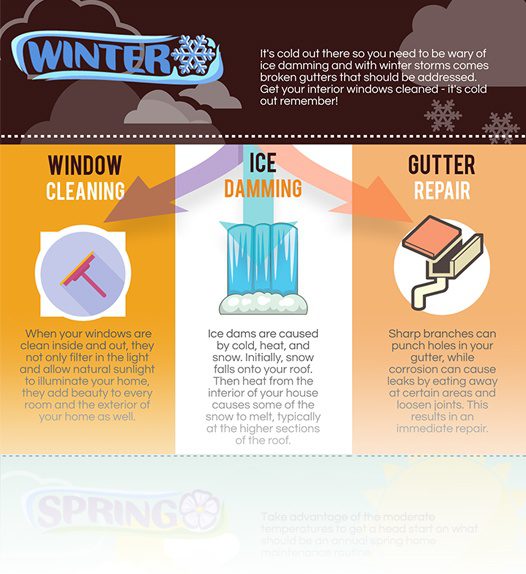Master The Crucial Pressure Cleaning Approaches Matched For Different Surface Types To Understand Excellent Outcomes-- Check Out The Strategies That Lead To An Impressive Finish
Master The Crucial Pressure Cleaning Approaches Matched For Different Surface Types To Understand Excellent Outcomes-- Check Out The Strategies That Lead To An Impressive Finish
Blog Article
Write-Up Writer-Bryant McGinnis
When it comes to press washing, the method you pick can make all the distinction in achieving a tidy, streak-free surface. You might locate that difficult surfaces, like concrete, call for a different strategy than softer materials, such as wood or plastic. It's important to adjust your approaches to the surface type to stop damage while maximizing cleansing effectiveness. So, what are the best techniques for each and every surface, and just how can you ensure you're using the appropriate setups and tools for the work? Let's discover what you require to understand to obtain the most effective results.
Hard Surface areas
When it pertains to push washing difficult surfaces, preparation is key. Before you also consider pulling out the stress washing machine, make the effort to get rid of the area of any kind of particles, furnishings, or challenges. You do not want anything entering your method or potentially damaging your equipment.
Next, inspect the surface area for any cracks or damage; this will certainly help you establish the ideal technique and stress settings.
Once you have actually prepared the location, it's vital to pick the right nozzle. For hard surface areas like concrete or block, a slim nozzle (15 or 25 degrees) works best to provide a concentrated stream of water that can successfully remove gunk and discolorations. Constantly start at a distance and slowly relocate closer to avoid any surface area damage.
As you begin cleaning, keep the wand relocating to stop streaks and over-saturation. It's likewise useful to work from the top down, allowing dirt and particles to wash away normally.
Lastly, remember to rinse pressure washing brick pavers after cleaning to remove any kind of remaining cleaning agent. With these strategies, you'll accomplish a clean and rejuvenated appearance on all your tough surface areas.
Soft Surfaces
Stress washing soft surfaces requires a gentler method to safeguard them from damages. Whether you're cleaning your deck, outdoor patio furnishings, or exterior siding, making use of way too much pressure can result in damages, scratches, or perhaps permanent injury.
Start by selecting a low-pressure nozzle, preferably a 25-degree or wider spray pattern, to disperse the water extra delicately.
Prior to you start, it's crucial to pre-treat any discolorations with a suitable cleaning solution. This action permits the cleaner to pass through the dirt and grime, making it less complicated to wash away without rubbing too hard.
Always apply the option from the bottom approximately avoid spotting.
When you start pressure cleaning, keep a range of a minimum of 12 to 18 inches from the surface. Relocate your wand in a sweeping movement, keeping it parallel to the surface to prevent concentrated stress on one place.
Rinse the area thoroughly after cleansing to remove any kind of residual cleaner.
Finally, check the surface for any type of missed out on spots and repeat the process if necessary. By following these steps, you can properly tidy soft surfaces while maintaining their honesty and look.
Specialized Surfaces
Cleaning up soft surfaces needs care, but specialized surfaces demand a lot more focus to information. When you tackle these surface areas, like fragile wood, discolored concrete, or particular sorts of exterior siding, utilizing the appropriate stress cleaning techniques is essential to prevent damage.
First, analyze the material. As an example, treated timber can typically stand up to moderate pressure, however softer woods like cedar may need a lower setting. Constantly begin with the lowest stress and gradually increase if essential.
For discolored concrete, make use of a follower spray nozzle and keep a regular distance to stop etching the surface.
When dealing with surface areas like plastic house siding or repainted surfaces, a large spray pattern assists disperse the pressure equally, securing the surface.
It's also important to use detergents especially created for specialized surfaces. They can enhance cleaning without endangering the product.
Rinse completely after washing to get rid of any type of deposit, as it can result in staining or deterioration gradually.
Conclusion
Finally, grasping stress cleaning methods for different surfaces can make all the distinction in your cleaning outcomes. For tough surface areas, adhere to slim nozzles and a top-to-bottom approach, while soft surface areas require a gentler touch with bigger nozzles. Do not neglect to pre-treat spots and wash extensively to avoid residue. By adjusting https://www.motorbiscuit.com/how-to-get-dried-water-stains-out-of-car-seats/ to every material, you'll not just achieve a cleaner finish yet likewise protect the honesty of your surface areas. Happy cleaning!
